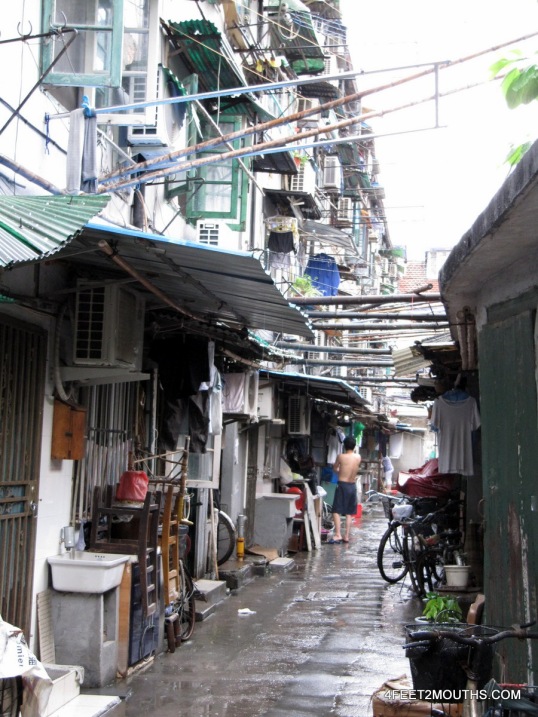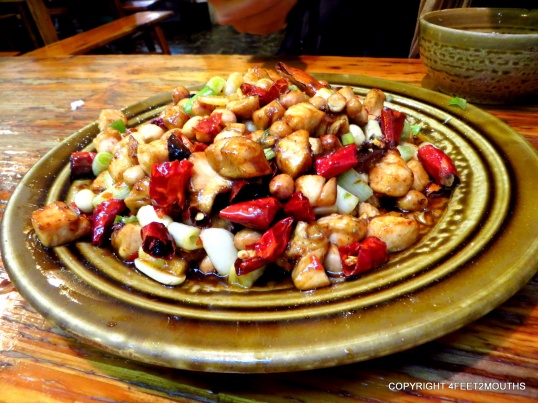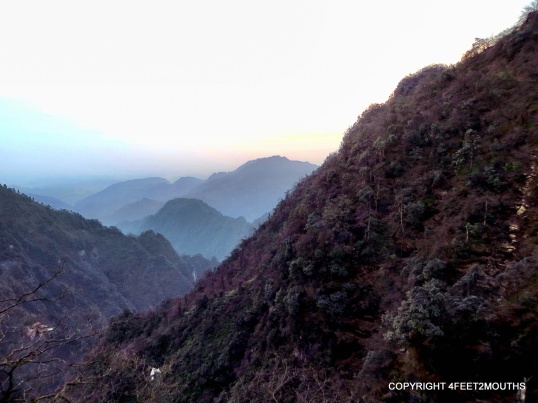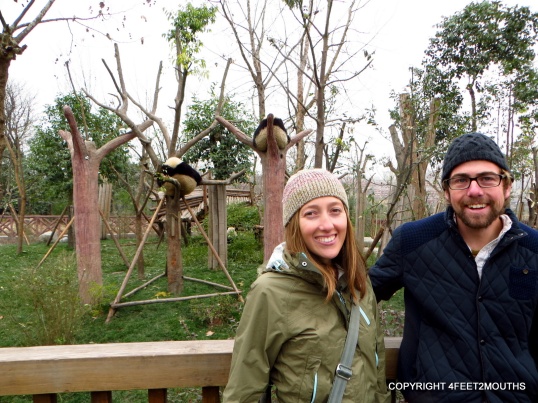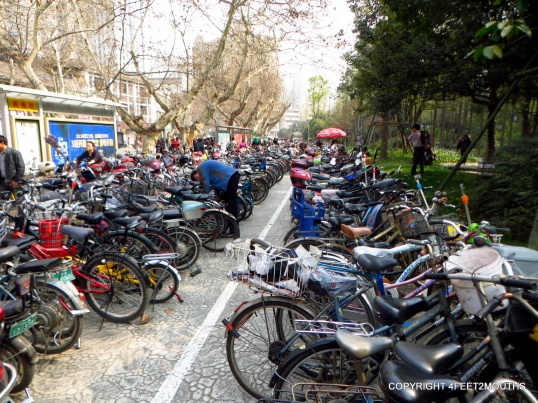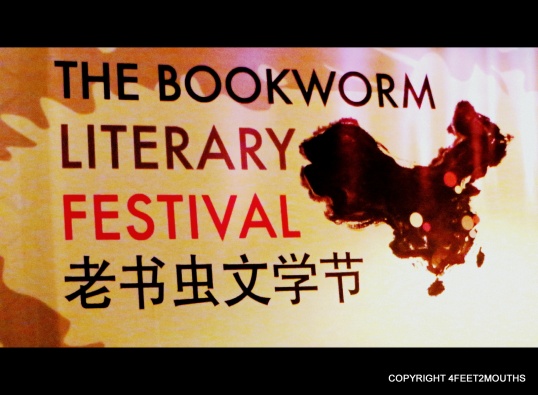
1763 Chinese Map of the World (Credit: wikicommons)
I think it was Churchill that described Russia as a “riddle wrapped in a mystery inside an enigma.” The idea was that in no way was it possible for Churchill to understand or justify the actions that he was witnessing. But, what about China? Things have changed a lot in the last 75 years, but I think it is appropriate to say that China is a riddle wrapped in a mystery inside an enigma with a gold and red bow. We were definitely challenged in our travels in China. We spent TEN weeks exploring the country; we traveled in six provinces, we visited twenty cities and I feel that I have only grazed the surface of Chinese culture, the food and the landscapes. China is a country that is magnificent and confusing and it needed a summary of its own. We saw so many beautiful places and we ate very delicious food, but we also had cultural experiences that left us perplexed. Occasionally we came across a few good “Chinese-isms” or chinglish that provided some smiles along the way. I’m posting pictures of some of the best ones as well as my random observations on food, transport, hygiene, speaking Mandarin, translations, censorship, materialism, staring and being a lao wei in China. Scroll down towards the end for a breakdown of our daily costs in the mainland and in Hong Kong.

I think of Hansel and Gretel, only bewitched stuffed animals were sold inside.

I love that the words “angle” and “Salisbury” were just added for fun.

This is not just any trash bin, it is the one where “unrecycling” is necessary
I think that China and I have one of those love/hate relationships. I think it is a beautiful country that is continuously complicated with all types of irony. I am completely fascinated and head over heels for Chinese food also all its varieties. From Yunnan, to Hunan or Sichuan, the most humble peasant shop owner can turn out dumplings and noodles that I still dream about. Few places on earth have food like China. The Chinese definitely love their food too.

The is where Jim Carrey created his signature line in “The Mask”
We took buses every day in China and for some reason it is a thing for older men to snort and pull up phlegm from their entire bodies then spit it on the floor of the moving bus. People didn’t just spit on the bus, of course, they spit everywhere. But it was when it occurred in enclosed spaces, like buses and restaurants, that it was particularly gag inducing. Seriously, wtf. Even the excellent and modern long distance trains were not safe. China has such an excellent rail network. I love the subtle sway and knocking of trains, even the tiny compartments provide a cozy comfort. We were sitting on a train and I watched a guy sneeze (it was close quarters); he of course did not cover his mouth or nose. With snot all over his face and shirt he turns to the train curtain to wipe himself off. It is a bewildering attitude towards hygiene when one sees people cleaning their chopsticks in hot tea before eating but not washing their hands, covering their sneezes and spitting everywhere. We rarely got sick in the rest of our travels but in China we consistently developed new colds.

It’s a barbecue place with fries?

I searched and searched for such a couch, but I only found paintings of “conches.”
There is no doubt that I struggled to speak mandarin in China. In fact, Carmen and I worked pretty hard to learn some key phrases of Putonghua, the dialect of Beijing, but we repeatedly found that the dialects throughout the country vary so diversely that we were lucky if we could get our duoshao chen (translation: how much is it?) understood by the people. We resorted to copious amounts of pointing and we found amusement in the translations that restaurants and shop owners found for their signs.

Mystical flower shop in Changsha

Yay, Chinese shipments of pharmaceuticals directly to my “Little House on the Prairie”

The food better be good here!
As it turns out there are thousands of business owners that have included English on their signs. Unfortunately this does not mean that they actually speak English, but more that they are hip to the fact that English looks pretty cool on a sign. So it is very doubtful that the pharmacy had anything actually to do with a “little house on the prairie,” or that there was a “yellow brick road” leading to a flower shop.

Honor and disgrace in China, do people really regard their actions as following this?

Three Gorges Dam and “willingness” for eminent domain
One idea that China challenged me to think about was: what is truth? Is something true because we are told by a higher authority it is true, or that major news sources report it, or is it because people around us believe it to be correct? In China, everything was censored, we could not access our blog, Facebook, YouTube, NY Times or BBC as they were all blocked and the only news released in the country is approved by the government. I was surprised to learn that mainland Chinese people still think that Taiwan is part of China. There is no concept that Taiwan votes for a president or survives as an independent country. Within China they are told Taiwan is another province of China. And thus we found subtleties in newsprint and billboards that, to us, feel like major distortions from the news we know, but to others are this is the truth. I encourage you to read it for yourself, Google China Daily and read a bit; it’s English with a clear pro-China bias. I think it is the hush-hush cover-ups that bother me- the tens of thousands killed in the Sichuan earthquake but the paper says that there was no damage in Chengdu, which is highly doubtful. Another example was about the three gorges project. We found a nice little description in a museum describing the excitement of villagers to leave their homeland. Since when is eminent domain a happy experience?

Friend this oxygen bar! Why is there a mound of trash then?

I was lost in the national park and this is the map I found.
Another thought: what is high quality? China has mastered reproduction and manufacturing, but at the cost of creation. As long as it “looks” like a person has an iPhone or a Louis Vuitton bag, a person must be high-class. There is so much effort in copying everything else in the world that there appears to be a serious loss in modern creativity. Appearances are everything, which means that clothing and in particular shoes are very important; it does not matter if they are fake or fake leather or that they even last more than a few weeks. What matters is the tag and how they look now. During our travels we would encounter other Chinese tourists or locals that would stare at our faces, then our shoes and then analyze our entire clothing. I think their thoughts were “you are white, why aren’t you rich.” Our clothes after seven months of travel were not at their best, but this obsession with material glamour is something that I have never understood.

Just one letter off but Antique Cliffy Painting got Carmen’s funny bone
Carmen and I were the object of constant staring in China. Yes, I have blond hair and yes, we were sometimes visiting places that few westerners visit. But the challenge in China was not that there were a few glances here and there; it was that whole families would stare at us forever. Imagine being on a bus and every time you turn your head to look along the aisle of the bus there were ten people hard-nose scrutinizing everything about us. Yes, they were curious; fine I get that, but it never came across as amiable (like it did in India) and it still made me a tad uncomfortable, even after fifty days of it.

Who carries religious list?

When jumping, one flies in a “parabolic” shape

It is a subtle euphemism, and again no jumping off the cliff.
It came a sharp reality to me, that in China I can only ever be a lao wei. I want to be judged by my merits rather than my outward appearance. This is an ideal Americans hold dear in theory, if not always in practice. But no matter what I do in China, even if I lived there for the rest of my life, I will always have the label of foreigner plastered across my forehead and would be judged first and foremost by this fact.

So true… suburban lawn owners and golfers unite!

One of those interpretive signs that means well and says nothing. Erosion caused the club shape, duh.
All that, and I will still travel in China again, I would even live there! (Carmen is not so sure about that last part.) It is the challenge and the beauty of it that will always draw me back. There are countless wonderful things about China that far outweigh the spitting and awkward stares. The infrastructure in China is fantastic. We took a six hour bus ride that went through over fifty tunnels and bridges! The metro systems are all new, easy to use and cheap. I look at San Francisco trying to make a designated bus lane on Geary Blvd and it is painful, but China would have 5 underground metro lines by now! The natural landscapes are phenomenal, China is growing at a rapid pace, but suburbs in the Western sense are rare; this means that all one billion people are pretty centralized. This leaves beautiful canyons, forest and landscapes ready for us to explore. The food, I can’t write about it enough, but it is really that good. China has five thousand years of history and the last fifty years is a minor blip in a long history of culture and tradition. There is so much to explore and enjoy; we have only seen a fraction of it.
China in numbers:
51 days in China
6 provinces
20 cities
10 accidental viewings of babies pooping on sidewalk
15 hacks and spits seen per day
42 local bus trips
28 regional bus trips
6 train rides (3 overnight)
20 metro trips
80 photos taken
12 market meals
400 Sichuan peppercorns consumed
90 cheap beers consumed (they only have 2.5% alcohol)
75 bowls of noodles consumed
65 dumplings eaten
35 temples explored

Carmen and I are scrupulous in understanding travel and what it takes to survive a life as a tourist. Thus I performed a little financial analysis for everyone to learn about what the costs are associated with traveling in true 4FEET2MOUTHS style. The costs of flights, country visas, travel insurance, bank fees and initial planning costs have been smeared into the whole trip and cost about $15.50 per person per day. That means it costs only $31.73 to bounce between cities, eat enormous quantities of food and sleep in clean, but small double rooms. We have an expense that we call “get in” which is the transportation costs moving from one city to another by train or regional bus. Thus, 50% of our total budget in China is getting to the city we want to see. Furthermore sleeping, eating, shopping and fun make up the rest. Entertainment or “fun” to us is any park entrance fee, bars or desserts on their own. Park entrances are exorbitant; we spent over $400 in entrance fees. Be ready to shell it out in Zhongdian, Yuanyang, Zhangjiajie, Leshan, Emeishan and every other beautiful place China has. It is a nice pie chart, as a couple it costs us only $94 to travel each day in China. Who can say they travel for under $100 per day ($50 per person)? We have created one of these charts for every country and we will be sharing them with you over the next few weeks.

Is this HK bus a submarine too!

From our 2009 trip to Shanghai: no shitting in the park (point 2) and no feudalism (point 5)
In some amazing way, Hong Kong is different, the same and unique all at once. Hong Kong has all the great modernity of infrastructure: buses, metros and bridges with people that are kind and patient to wait in lines. The food is fabulous and the language is equally difficult to understand. I particularly like that the double decker buses have a real periscope. No one spits in Hong Kong, no hacks interrupt ones dining and restrooms have actually been cleaned! We visited Hong Kong for two weeks this trip and it came as a welcome relief after several weeks of struggling though China.

All the glamour and glitz that is Hong Kong comes at a price. Most specifically, hotels are expensive and there are nicer restaurants fulfill every foodie’s appetite. Hong Kong is well worth visiting, but the total costs are $70 per person per day or $140 per couple per day. Thus, as you can see eating in Hong Kong is twice as expensive as in China. Lodging is a whole other system in Hong Kong; the rooms are smaller, cleaner and definitely nicer quality. We resorted to couchsurfing six out of the 14 nights which saved us $250 ($17/day). Hong Kong is worth it and much more.
China and Hong Kong are inherently linked. In 1997 China regained control of Hong Kong as the colonial ties ended. There is a fifty year grace period as China figures out what to do with Hong Kong’s free speech, capitalism and voting. This essentially means that all the advancement and human sensitivity that Hong Kong embraces is at risk of being swallowed by the behemoth of Chinese mainland culture. I love both China and Hong Kong, but I like them different, two flavors that shouldn’t be mixed too much. I encourage everyone to visit, explore and integrate themselves into China and Hong Kong, it is a complicated but phenomenal experience.



